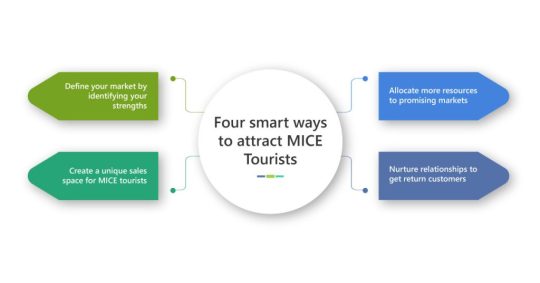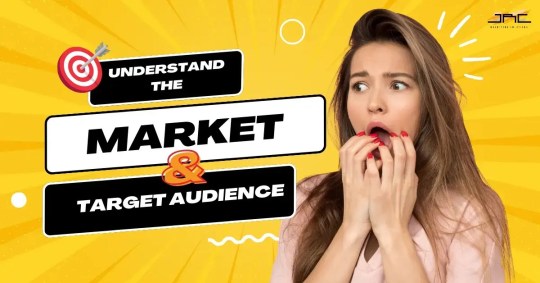#swot analysis strength
Text
Nike: Business Model, Canvas & SWOT Analysis
Introduction
Nike is a globally recognized sportswear and athletic apparel brand that has captured the hearts of millions of people around the world. From professional athletes to fitness enthusiasts, Nike’s iconic swoosh logo has become a symbol of excellence, performance, and innovation. This article will delve into the world of Nike, exploring its history, business model, marketing…

View On WordPress
#and threats#Does Nike support sustainability initiatives?#Is Nike only known for athletic footwear?#Nike branding strategy#Nike business environment analysis#Nike business model#Nike Business Model Canvas#Nike business model case study#Nike marketing strategy#Nike strengths#Nike SWOT Analysis#opportunities#weaknesses#What is Nike&039;s most popular product?#Where can I purchase Nike products?
2 notes
·
View notes
Text
#SWOT Analysis#Strength#Weaknesses#Opportunities#Threats#Framework for developing a Marketing Strategy#Marketing Assignment Help
0 notes
Text
Holy SWOT Analysis
S– Strength From Christ With Psalm 27v1W– Less Weaknesses From Christ With Phillipians 4v6O– More Opportunities From Christ With 1 Thessalonians 5v17T– No Threats At All With Ephesians 6v10-19
In Christ Jesus’ Name,
A-M-E-N!!
Like|Comment|Save|Share|Follow
Please don’t forget to comment

View On WordPress
#1 Thessalonians 5v17#Ephesians 6v10-19#Holiness Highlight#Holy Bible#Holy SWOT Analysis#Opportunities#Philippians 4v6#Pray-Without-Ceasing#Psalm 27v1#Strengths#Threats#Weaknesses
1 note
·
View note
Text
SWOT Analysis
Strengths, Weaknesses, Opportunities, Threats (SWOT) analysis is a tool businesses and organizations use to evaluate the internal and external factors that can impact their success. It is a straightforward method that can provide valuable insights into a company’s current situation and help it make strategic decisions.
The acronym SWOT stands for:
Strengths: the unique qualities and attributes…

View On WordPress
#business#competitiveness#external factors#improve competitiveness#industry changes#internal factors#investments#market changes#new business opportunities#Opportunities#organizations#strategic decisions#Strengths#success#SWOT analysis#Threats#Weaknesses
0 notes
Text
My New Book Titled ‘Rise of Local Pharma Industry in Pakistan – Asrar Qureshi’s Blog Post #706
My New Book Titled ‘Rise of Local Pharma Industry in Pakistan – Asrar Qureshi’s Blog Post #706

View On WordPress
#Asrar Qureshi#Blogpost706#Local Pharma#Opportunities#Pharma Industry#Pharma Marketing#Pharma Pakistan#Pharma Veterans#Strengths#SWOT Analysis#Threats#Weaknesses
0 notes
Text
how to successfully rebrand⋆.ೃ࿔*:・🧁

this post is a collaboration with my FAVORITE @prettieinpink. in this post we'll elaborate on rebranding urself and implementing change in a way that is not only efficient but not that difficult to do ✨


FLIP THE SCRIPT ;
write down who u wanna become. what ur goals are, what ur style is like, ur schedule, achievements, relationships etc. however instead of writing it like "it'll happen one day" write it as though it happened already.
on the flip side i want u to write down what u think hinders you or blocks u from making the rebrand that u want so desperately. ur weakness. then flip them and find solutions on how to deal with it entirely, or diminish it significantly.
EXPAND ON UR BEAUTY ;
learn how to do makeup that is suited for ur own features. learn which clothes and colors compliment and flatter you the best. when u try and use a cookie-cutter approach to beauty as a way to fit a standard, you won't feel/look ur best.
thats why its important to know your own self the very best. no one knows ur beauty and body like you do so only you know best how to make ur beauty bloom.
DEVELOP UR OWN STYLE ;
u dont have to follow along with every single trend that u see in the fashion industry. although its fun at times or the particular trend can inspire u to create more outfits, its important to have a sense of individuality when u dress.
i recommend creating a pinterest board and filling it up with clothes that u love and clothes that align with ur style. find a fashion inspiration or multiple if u dont know where to start. when u go shopping, reference this board and look for clothes that r similar to the clothes in ur pinterest board.
REFRESH BUTTON ;
block the numbers of people that keep u trapped in a version of urself that u no longer associate with. get comfy with the block button girlies!! you can control who sticks around you and you're directly responsible for protecting ur peace.
delete photos of people who are no longer in ur life (like, they hurt u or walked out of ur life/vice versa) change up ur environment and what ur staring at every single day. unfollow people on social media who dont inspire you/who make u feel bad about urself and where u are on ur rebranding journey.
ADAPT ;
remember that list that we made earlier? lets learn to adapt habits can cultivate that and make this rebrand thrive. identify nonsense in ur life and learn how to get comfortable with cutting it off.
EXECUTE ;
now its time to put everything that we've covered into a action with a few easy and simple steps.
do ur SWOT analysis (strengths, weaknesses, opportunities, and threats)
create solutions to what u classify as ur weakness
commit to yourself and your rebrand
#advice#honeytonedhottie⭐️#self concept#becoming that girl#it girl#self care#self love#that girl#it girl energy#collaboration#collab#prettieinpink#dream girl#dream girl tips#dream life#self development#self improvement#rebrand#level up#hyper femininity#girly#girl blogger#girl blogging#girl blog
184 notes
·
View notes
Note
Hello! I'm from the Philippines and currently pushing for liberation from the colonized mindset that permeates through our everyday life, as well as mutual aid initiatives to mitigate economic disparity. Your videos have been eyeopening for me and I was wondering... What do you think are the most sustainable and efficient courses of action? I have leadership experience in grassroots movements but I find it quite difficult to organize as I struggle to find like-minded people.
I think that the most sustainable and efficient courses of action are entirely context-dependent and it's tough for me to give the people who ask me this question specific recommendations without a fully detailed description of their unique situation.
As much as I hate to borrow from "corporate speak," it might be helpful to do a SWOT analysis of your area to identify the strengths, weaknesses, opportunities, and threats present in your unique context. Maybe someday I'll make a video going into that idea in more detail.
It may also help to do a resilience assessment. I found Think Resilience's self-directed course to be quite helpful in explaining this way of thinking in a concise manner. It's also completely free.
I fully relate to the struggle to find like-minded people, and it has certainly continued to be a challenge in my own local efforts. If/when I find an easy solution to this, you'll be the first to know. What I can suggest for now is that you seek out not necessarily like-minded people, but perhaps like-invested people. Meaning seek out groups that are already doing some sort of social, political, environmental, or educational activism but may not necessarily share your radicalism and try to work/build relationships with them that will naturally create opportunities for you to radicalise their efforts and tactics and spread anarchic and decolonial ideas.
Of course, doing this solo comes with the risk of your own radicalism being watered down--especially in more institutional spaces--which is why especifists recommend you engage in social insertion within movements as a group rather than as an individual.
My video on social revolution is meant to be a comprehensive overview of the variety of actions necessary to transform our world, so you can also look to those tactics and projects to draw inspiration once you've identified what needs doing and been able to connect with some folks who are as motivated as you to see change.
Hope this can help in some way. All power to all the people in the Philippines!
18 notes
·
View notes
Text
//i matched with this dude on an app and he wanted me to give a SWOT analysis of myself and my personality. Had to google this, but he wants me to tell him my Strengths, Weaknesses, Opportunities and Threats. Is this like D&D character stats for business folks?
5 notes
·
View notes
Text
Emerging Technologies - Week 1
It's the first week of class for the Spring Term, and this will be my 3rd semester. This week I learned about Gap Analysis, it is the process that companies use to evaluate the current state while also looking if they're meeting the expected outcome. If not, then the company will now identify what are the gaps or in-between issues, and what will be the best solution. More of auditing the current state to set up a good direction in the future.
Also, I have learned about the different tools, processes, templates, and reports of Gap Analysis. For the template, you have to identify what are Items being analyzed, the Current State, the Desired State, and what are the Existing Gaps. After you identify from the given template, you will now apply the six-step process for Gap Analysis. You have to be very detailed in working on these steps.
There are also six tools to use in Gap Analysis. And you can use one of each tools depending on the current situation of the business or the company.
First, we have the SWOT analysis, one of the most popular tools that is being used. This stands for Strengths, Weaknesses, Opportunities, and Threats. The second is PERT, you can use this tool if the project is complex and heavily time-dependent. Another is the Nadler-Tushman congruence model, unlike the SWOT that looks at schedules and timing, this tool focuses more on how different elements of an organization. Fishbone Diagram, this tool literally looks like a fish skeleton if you'll gonna look at the chart. Mckinsey 7-S model,it has 7 S's, structure, strategy, systems, skills, style, staff, and shared values. and Burke-Litwin Change Model, this model tackles the issue of change management identifying the 12 elements that influence an organization.
6 notes
·
View notes
Text
How to Create a Personal Development Plan: Steps and Tips
Creating a personal development plan is a powerful way to achieve your goals, improve your skills, and enhance your overall well-being. Here's how to create an effective personal development plan with actionable steps and tips.
Steps to Create a Personal Development Plan
Self-Assessment
Start by assessing your current situation. Reflect on your strengths, weaknesses, skills, and areas for improvement. Consider using tools like SWOT analysis (Strengths, Weaknesses, Opportunities, Threats) to gain a comprehensive understanding of yourself.
Set Clear Goals
Identify your short-term and long-term goals. Ensure they are Specific, Measurable, Achievable, Relevant, and Time-bound (SMART). Write down your goals to keep them clear and actionable.
Prioritize Your Goals
Rank your goals based on their importance and urgency. Focus on a few key goals at a time to avoid feeling overwhelmed.
Develop Action Plans
Break down each goal into smaller, manageable steps. Outline what you need to do to achieve each goal, including resources, skills, and support required.
Set Deadlines
Assign realistic deadlines to each action step. Deadlines create a sense of urgency and help you stay on track.
Identify Resources
Determine what resources you need to achieve your goals. This could include books, courses, mentors, or tools.
Monitor Progress
Regularly review your progress. Adjust your action plans as needed and celebrate your achievements along the way.
Stay Flexible
Be open to adjusting your plan as circumstances change. Flexibility is key to staying on track despite setbacks.
Tips for a Successful Personal Development Plan
Stay Motivated
Keep your motivation high by regularly reminding yourself of the benefits of achieving your goals. Visualize your success and maintain a positive attitude.
Seek Feedback
Ask for feedback from trusted friends, family, or mentors. Constructive feedback can provide valuable insights and help you improve.
Stay Organized
Use planners, apps, or journals to keep track of your goals, action steps, and progress. Staying organized helps you stay focused and efficient.
Commit to Continuous Learning
Make learning a continuous part of your development plan. Attend workshops, read books, take online courses, and stay updated in your field.
Balance Your Life
Ensure your personal development plan includes goals related to various aspects of your life, such as career, health, relationships, and hobbies. Strive for a balanced approach to personal growth.
Stay Accountable
Share your goals with a friend or mentor who can hold you accountable. Regular check-ins can keep you motivated and on track.
Reflect and Adjust
Take time to reflect on your journey. What’s working? What’s not? Adjust your plan based on your reflections to ensure continuous improvement.
Conclusion
Creating a personal development plan is a dynamic and rewarding process that can help you achieve your goals and enhance your overall well-being. By following these steps and tips, you can create a plan that is tailored to your needs and set yourself on a path of continuous growth and improvement. Have you created a personal development plan? Share your experiences and tips in the comments below!
2 notes
·
View notes
Text
Project Risk Management A Comprehensive Guide

Successful navigation of uncertainties and possible traps is essential in the dynamic field of project management. risk management in project management is useful in this situation. Through a methodical approach to risk identification, assessment, and mitigation, project managers can guarantee that their projects remain on course and achieve their goals. This blog explores the fundamentals of Risk Mitigation For projects and provides helpful advice for efficient execution.
Understanding Risk Mitigation For Projects
Project risk management includes recognizing, evaluating, and mitigating project hazards. Technical difficulties, resource limitations, stakeholder disputes, and outside variables like market or regulatory changes are some of the possible causes of these hazards. Project teams may foresee possible problems and create proactive plans to handle them with the aid of effective risk management.
Key Components Of Risk Mitigation For Projects

Risk Identification: The first step in managing risks is to identify them. This involves brainstorming sessions, expert consultations, and reviewing past projects to pinpoint potential threats. Tools like SWOT analysis (Strengths, Weaknesses, Opportunities, Threats) and checklists can aid in this process.
Risk Assessment: Once risks are identified, they need to be assessed to determine their potential impact and likelihood. This assessment helps prioritize risks based on their severity and the probability of occurrence. Techniques such as qualitative analysis, quantitative analysis, and risk matrices are commonly used for this purpose.
Risk Response Planning: After assessing the risks, project teams must develop strategies to mitigate them. This involves creating response plans that outline specific actions to address each risk. Common strategies include avoiding the risk, transferring the risk (e.g., through insurance), mitigating the risk (e.g., implementing safeguards), or accepting the risk (e.g., if the cost of mitigation outweighs the potential impact).
Risk Monitoring and Control: Risk management is an ongoing process. Regularly monitoring and reviewing risks throughout the project lifecycle ensures that new risks are identified and existing risks are managed effectively. Tools like risk registers and risk dashboards can help track and communicate risk status to stakeholders.
Common Types Of Project Risks

Understanding the various types of risks that can affect a project is fundamental to an effective project management timeline. Here are some common types of project risks:
Technical Risks: These involve challenges related to technology and project specifications. Examples include technological changes, system failures, or issues with the technical performance of project components.
Financial Risks: These risks pertain to budgetary concerns, including cost overruns, funding shortages, or financial mismanagement.
Operational Risks: These arise from day-to-day project operations and can include process inefficiencies, equipment failures, or disruptions in supply chains.
Legal and Compliance Risks: Projects must adhere to various laws and regulations. Non-compliance can result in legal penalties, project delays, or increased costs.
Strategic Risks: These involve risks associated with the project's alignment with organizational goals and strategies. Market changes, competitive pressures, or strategic misalignment can pose significant threats.
Practical Tips for Effective Risk Mitigation For Projects
Engage Stakeholders Early and Often: Involving stakeholders from the beginning helps identify potential risks that may not be apparent to the project team alone. Regular communication with stakeholders ensures that they are aware of the risks and the steps being taken to manage them.
Foster a Risk-Aware Culture: Encouraging a culture where team members are proactive about identifying and reporting risks can significantly enhance the risk management process and improve team efficiency. Training sessions and workshops on risk management can help build this culture.
Use Technology to Your Advantage: Various software tools are available to support risk management activities. These tools can streamline the processes of risk identification, assessment, and monitoring, making it easier to manage risks efficiently.
Document and Learn from Past Projects: Maintaining detailed records of risks encountered in past projects and the measures taken to address them provides valuable insights for future projects. Lessons learned can inform risk management strategies and improve overall project outcomes.
Regularly Review and Update Risk Management Plans: As projects progress, new risks may emerge, and existing risks may change. Regularly reviewing and updating risk management plans ensures that they remain relevant and effective.
The Benefits of Risk Mitigation For Projects

Implementing robust risk management practices offers several benefits:
Improved Decision-Making: With a clear understanding of potential risks, project managers can make informed decisions that balance risks and rewards.
Enhanced Stakeholder Confidence: Demonstrating a proactive approach to risk management builds trust and confidence among stakeholders.
Increased Likelihood of Project Success: By anticipating and addressing potential issues, projects are more likely to be completed on time, within budget, and to the desired quality standards.
Better Resource Allocation: Understanding the potential impact of risks allows for more effective allocation of resources, ensuring that critical areas receive the attention they need.
You can also watch: EmpMonitor: Manage Remote Work Easily
Conclusion
In conclusion, project risk management is an integral part of successful project delivery. By systematically identifying, assessing, and mitigating risks, project teams can navigate uncertainties and achieve their objectives more effectively. Embracing a proactive approach to risk management not only enhances project outcomes but also fosters a culture of continuous improvement and resilience.
#project risk management#risk management in project management#risk management plan template#risk management strategies#project management tool#workforce management software
2 notes
·
View notes
Text
Excellence in MICE Practices at a Leading Hotel in Toronto

Welcome to the world of MICE (Meetings, Incentives, Conferences, and Exhibitions) at one of Toronto's top hotels, the Grand Maple Hotel. Discover how we create memorable event experiences.
Dedicated Professionals

Our team includes expert event planners, AV technicians, and catering staff who ensure seamless presentations and perfect dining experiences.
Versatile Venues

Located downtown, our hotel offers elegant ballrooms, functional conference rooms, and serene outdoor spaces with modern amenities.
Types of Events Hosted

We host meetings, conferences, exhibitions, and incentive trips, adapting our spaces for each event's needs.
Overcoming Challenges
From scheduling to technical needs, our experienced team handles event challenges with expertise.
SWOT Analysis

Strengths: Excellent facilities and top-notch service.
Weaknesses: Limited availability during peak times.
Opportunities: Expanding digital event offerings and partnering with local businesses.
Threats: Economic changes and strong competition.
Lessons from Hospitality

Comparing our event operations with other businesses shows how we manage operations and compete effectively.
Overall
Our commitment to excellence in event planning at the Grand Maple Hotel is evident in our meticulous planning and dedicated team.
2 notes
·
View notes
Text
MoonKnight
worst part about doing a SWOT (strengths, weaknesses, opportunities, threats) analysis on an illustration on moon knight is that I like the character too much, and the style he's drawn in, to say anything bad about it or FIND anything bad and now I'm struggling to finish this god damn analysis because I just HAD to go and choose my favourite character.
(also, I cannot change it, I have already written 300 words beforehand from other analysis techniques)
pray for me /j
4 notes
·
View notes
Text
How do marketing agencies develop marketing strategies tailored to individual businesses?
Marketing agencies develop marketing strategies tailored to individual businesses through a systematic and iterative process. Here are the key steps involved:
Understanding the Business:
The agency begins by gaining a deep understanding of the client's business, its industry, target market, products/services, competitive landscape, and unique selling points. They may conduct interviews, research, and analysis to gather this information.
Defining Goals and Objectives:
The marketing agency works closely with the client to establish clear marketing goals and objectives. These goals should align with the client's overall business objectives and be specific, measurable, achievable, relevant, and time-bound (SMART).
Conducting Market Research:
Thorough market research is conducted to gain insights into the target audience, consumer behavior, market trends, and competitor strategies. This research may involve surveys, focus groups, data analysis, and studying industry reports.
Identifying Target Audience:
Based on market research findings, the agency identifies and defines the client's target audience segments. They develop buyer personas or customer profiles that capture the characteristics, needs, and preferences of these target segments.
SWOT Analysis:
The agency performs a SWOT analysis (Strengths, Weaknesses, Opportunities, and Threats) to assess the client's internal capabilities and external market conditions. This analysis helps identify areas of competitive advantage and areas that require improvement.
Defining Value Proposition:
The agency works with the client to articulate a clear value proposition that differentiates their products/services from competitors. This involves understanding the unique selling points and crafting compelling messaging that resonates with the target audience.
Strategy Formulation:
Based on the gathered information and analysis, the marketing agency develops a comprehensive marketing strategy that outlines the key approaches, tactics, and channels to achieve the defined marketing goals. This may include digital marketing, content marketing, social media, advertising, public relations, events, etc.
Setting Key Performance Indicators (KPIs):
The agency establishes measurable KPIs that align with the marketing goals. These KPIs could include metrics such as website traffic, conversion rates, customer acquisition, brand awareness, engagement levels, or return on investment (ROI).
Implementation and Execution:
Once the strategy is finalized, the agency creates a detailed marketing plan with timelines, budgets, and action steps. They collaborate with the client to execute the plan, utilizing various marketing tactics, platforms, and creative assets.
Monitoring and Optimization:
Throughout the implementation process, the agency closely monitors the performance of marketing activities against the defined KPIs. They use analytics tools, data tracking, and reporting to measure results and make data-driven adjustments for optimization.
Ongoing Evaluation and Adaptation:
Marketing agencies continuously evaluate the effectiveness of the marketing strategy and tactics. They analyze data, gather feedback, and make necessary adaptations to the strategy based on market changes, customer feedback, and performance insights.
By following these steps, marketing agencies can develop marketing strategies that are customized to suit the unique characteristics, goals, and target audience of each individual business they work with.
7 notes
·
View notes
Text
Mastering Your Marketing The 7 Essential Steps for Crafting a Winning Strategy

Introduction
In the dynamic and competitive landscape of business, a well-crafted marketing strategy is crucial for success. It’s more than just coming up with imaginative ideas, it involves a deep understanding of the market, competition, and the preferences of your target audience.
This article will explore the key components of a winning marketing strategy, providing a detailed, step-by-step guide to help you align your strategy with your business goals and objectives. We’ll also highlight the importance of tracking progress and making necessary adjustments to ensure ongoing relevance and effectiveness.
Step 1: Understand the Market and Target Audience
Understanding your market and target audience is the foundation of a successful marketing strategy. This involves extensive research into customer demographics, behavior, and competitive analysis.
Demographic Research
Demographic research entails a thorough analysis of customer characteristics such as age, gender, income, and location. By identifying key demographic factors, you can create a detailed profile of your ideal customer, enabling you to tailor your marketing efforts effectively. Techniques for demographic research include surveys, data analysis from websites and social media, and studying industry reports.
Types of Demographic Research
Age-Based Research
Analyzing data based on different age groups to tailor marketing efforts.
Gender-Based Research
Understanding gender preferences to create targeted campaigns.
Income-Based Research
Analyzing data based on income levels to customize messaging.
Geographical Research
Studying data based on location to identify optimal marketing locations.
Behavioral Study
Understanding customer behavior is crucial for building a successful marketing strategy. Behavioral study involves analyzing how customers interact with a brand, their purchasing habits, and decision-making processes.
Examples of Behavioral Study Methods
Purchase History Analysis
Examining past purchases to tailor marketing efforts.
Website Analytics
Analyzing website traffic, user engagement, and conversion rates.
Social Media Listening
Monitoring social media channels to understand customer sentiments.
Competitor Analysis
Beyond understanding your target audience, it’s essential to analyze the competition. Conducting a SWOT analysis (Strengths, Weaknesses, Opportunities, Threats) and benchmarking against competitors’ products, services, or processes provides valuable insights.

Step 2: Set Measurable Objectives
Once you understand your market and audience, the next step is to set measurable objectives. These objectives should be SMART: Specific, Measurable, Achievable, Relevant, and Time-bound.
Avoid common mistakes, such as setting vague or unrealistic objectives, to ensure your goals guide your marketing tactics effectively.
Breaking Down SMART Objectives
Specific
Clearly defining and articulating the objective.
Measurable
Establishing metrics for tracking and evaluation.
Achievable
Realistic goals within given resources.
Relevant
Aligning with the overall business strategy.
Time-Bound
Having a specific deadline or timeframe for completion.
Step 3: Develop a Messaging Framework
A messaging framework acts as a blueprint for consistent communication with your target audience across all channels. It includes key messages that communicate the unique value proposition of your brand.
Crafting an Effective Messaging Framework
Speak their Language
Tailor messages to resonate with your audience.
Highlight Benefits
Focus on positive outcomes rather than just features.
Consistency is Key
Ensure messages align with overall business strategy.
Step 4: Choose the Right Marketing Channels
Effectively promoting your product or service requires selecting the right marketing channels that resonate with your audience and align with your objectives.
Avoid the common mistake of spreading too thin across channels. Focus on the most effective ones for your target audience and goals.
Considerations for Choosing Marketing Channels
Know Your Audience
Understand where your audience spends time online.
Align with Objectives
Different channels suit different marketing objectives.
Budget and Resources
Choose channels feasible within your budget.

Step 5: Develop a Content Strategy
In today’s digital age, content is a cornerstone of any marketing strategy. A robust content strategy involves creating and distributing high-quality content to attract and engage your target audience.
Common mistakes include prioritizing quantity over quality and neglecting search engine optimization. Quality content builds trust and establishes your brand as a thought leader.
Building an Effective Content Strategy
Understand Audience Needs
Identify topics that resonate with your audience.
Choose Effective Formats
Tailor content formats to audience preferences.
Select Distribution Channels
Choose platforms where your audience is most active.
Step 6: Measure and Adjust
Creating a successful marketing strategy is an ongoing process that requires continuous monitoring and evaluation.
By tracking KPIs and analyzing data, you can identify effective tactics, make adjustments, and optimize future efforts.
Utilizing Key Performance Indicators (KPIs)
Website Traffic
Measure website visits.
Conversion Rates
Evaluate how well you convert leads.
Return on Investment (ROI)
Assess the profitability of your efforts.
Social Media Engagement
Track interaction on social platforms.
Customer Retention Rates
Measure customer loyalty.
Step 7: Embracing a Dynamic Approach
A successful marketing strategy should be dynamic, adapting to changing market conditions and customer needs.
Flexible Approach
Regular Analysis and Optimization
Conduct ongoing market research for up-to-date insights.
Adapt to Trends
Adjust strategies based on industry trends.
Crisis Preparedness
Be ready to adjust messaging during unexpected events.
Conclusion
A successful marketing strategy requires a deep understanding of your target audience and market. It should include measurable objectives, a cohesive messaging framework, and a well-defined content strategy leveraging appropriate marketing channels. Regular review and adaptation to changing market conditions and customer needs are crucial for long-term success. Remember, a winning marketing strategy is a fluid document that evolves over time, demanding continuous monitoring and adjustment.
Ready to step up your marketing game?
Want more tips for your business? Contact us now and let’s make your business stand out!
Ready to supercharge your marketing strategy with data-driven insights?
Explore Analytics and Reporting tools mentioned in this post, or reach out to our team for a free consultation on how to kickstart your data-driven marketing journey. Don’t miss out on the power of data – start making smarter marketing decisions today!
CONTACT NOW
#marketing strategies#digital marketing#search engine optimization#business marketing#marketing agency#online marketing#digital marketing agency#marketing#seo marketing#business strategy#marketing channels#content marketing#content strategy#competitive analysis#growth#search engine marketing
3 notes
·
View notes